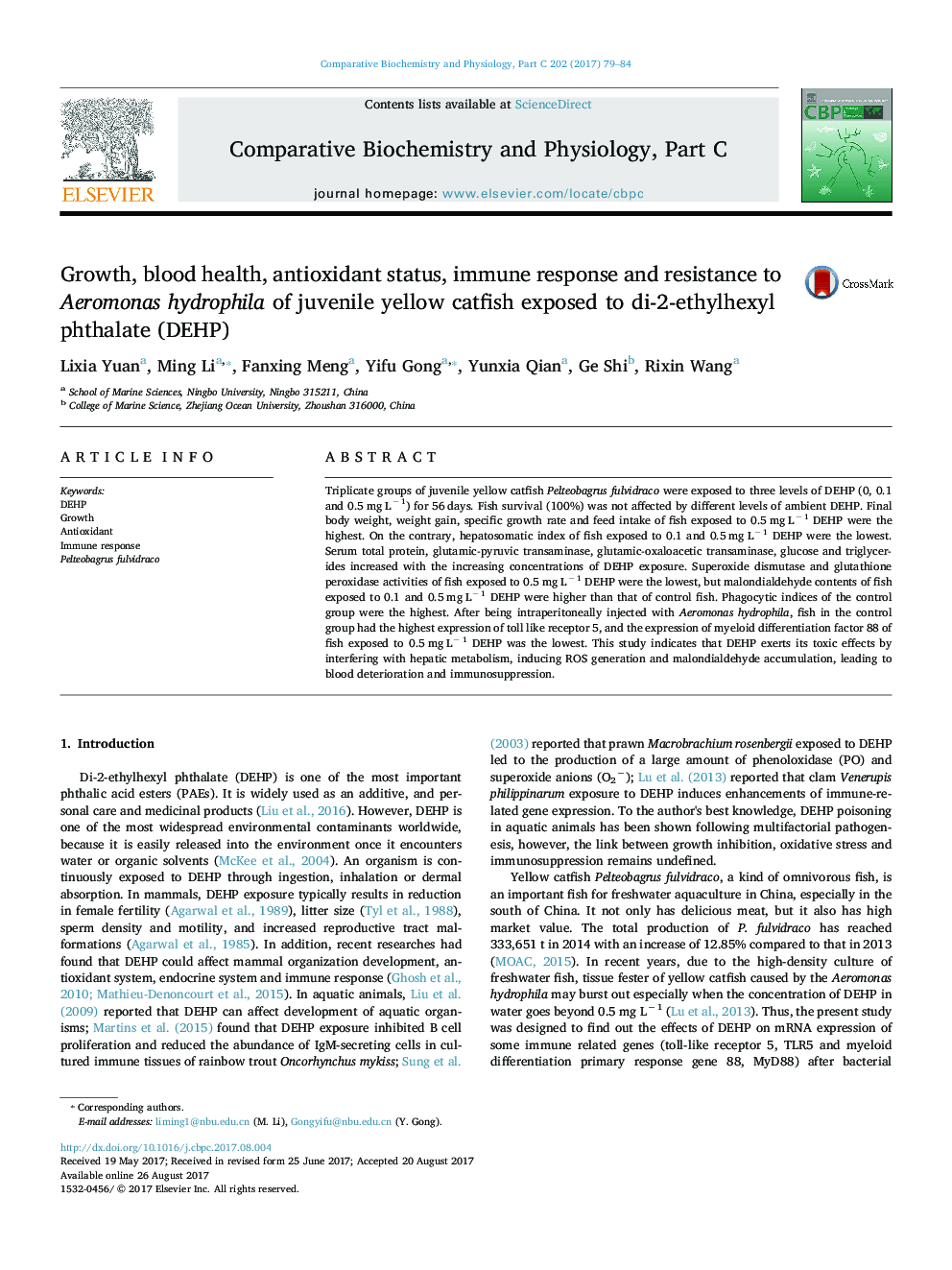| Article ID | Journal | Published Year | Pages | File Type |
|---|---|---|---|---|
| 5510547 | Comparative Biochemistry and Physiology Part C: Toxicology & Pharmacology | 2017 | 6 Pages |
Abstract
Triplicate groups of juvenile yellow catfish Pelteobagrus fulvidraco were exposed to three levels of DEHP (0, 0.1 and 0.5 mg Lâ 1) for 56 days. Fish survival (100%) was not affected by different levels of ambient DEHP. Final body weight, weight gain, specific growth rate and feed intake of fish exposed to 0.5 mg Lâ 1 DEHP were the highest. On the contrary, hepatosomatic index of fish exposed to 0.1 and 0.5 mg Lâ 1 DEHP were the lowest. Serum total protein, glutamic-pyruvic transaminase, glutamic-oxaloacetic transaminase, glucose and triglycerides increased with the increasing concentrations of DEHP exposure. Superoxide dismutase and glutathione peroxidase activities of fish exposed to 0.5 mg Lâ 1 DEHP were the lowest, but malondialdehyde contents of fish exposed to 0.1 and 0.5 mg Lâ 1 DEHP were higher than that of control fish. Phagocytic indices of the control group were the highest. After being intraperitoneally injected with Aeromonas hydrophila, fish in the control group had the highest expression of toll like receptor 5, and the expression of myeloid differentiation factor 88 of fish exposed to 0.5 mg Lâ 1 DEHP was the lowest. This study indicates that DEHP exerts its toxic effects by interfering with hepatic metabolism, inducing ROS generation and malondialdehyde accumulation, leading to blood deterioration and immunosuppression.
Related Topics
Life Sciences
Biochemistry, Genetics and Molecular Biology
Biochemistry
Authors
Lixia Yuan, Ming Li, Fanxing Meng, Yifu Gong, Yunxia Qian, Ge Shi, Rixin Wang,
